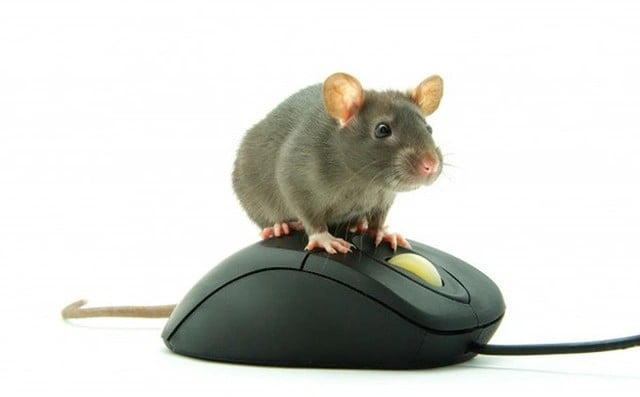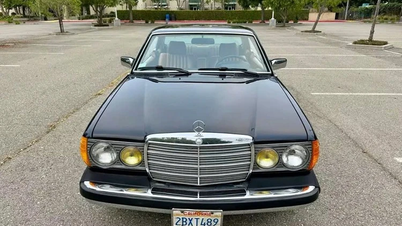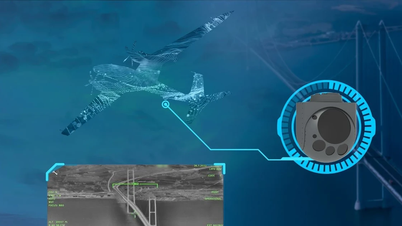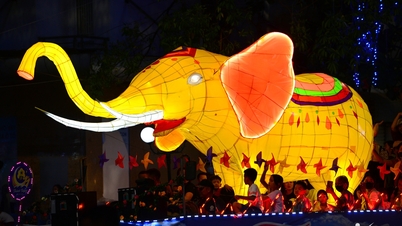Born in the 60s of the 20th century, the "computer mouse" is used as a peripheral device, helping people adjust, perform operations or interact directly on the computer.
You may not know, before it was called “computer mouse”, this component was called “X-Y orientation device on the screen”. The reason for this name is because it controls and interacts directly with the computer through the screen. However, this name is too long, difficult to remember and not catchy, so it had to be changed to a new name.
 |
Why is a "computer mouse" called a...mouse?. Illustration photo |
Then, very naturally from the “X - Y directional device on the screen” appeared the name “mouse”, simply because it has the same appearance and size as a real mouse.
The computer mouse was researched and created by two engineers, Douglas Engelbart and William English. When asked about the origin of the name "mouse", Douglas Engelbart said: "No one remembers where it came from. It simply looked like a mouse with a tail, and we all saw it and called it that."
In the 1960s, Douglas Engelbart and his colleague Bill English at the Stanford Research Institute (USA) wanted to develop a device that would help people control computers more easily. Computers at that time were very large in size, expensive in price and extremely complicated to operate. To perform tasks, users had to type each command on the keyboard.
After a long period of research and testing, Engelbart announced a device he called the "XY cursor", or “XY orientation device on the display system” in 1964. The first computer mouse prototype had a rather crude appearance, just a wooden box with two metal wheels to help the device move on a flat surface. At first glance, this mouse model seemed simple, but Engelbart's team had to experiment many times to be able to create the most complete design in terms of speed and accuracy.
However, the original, difficult-to-remember name was not suitable for marketing purposes, forcing Douglas Engelbart to come up with a new name. In the end, everyone at Stanford Research Institute agreed to call the "XY-orientation device on the display system" simply "mouse", because its shape and size were quite similar to a real mouse. The protruding tail was the wire that connected to the computer. In fact, the mouse tail in the original was placed right under the user's wrist, fortunately the inventors quickly realized the inadequacy and changed the design, resulting in the mouse model with the wire facing the opposite direction as it is now.
When asked about the naming issue, Engelbart once shared that the peripheral device that users used to interact with the computer was called a mouse because it looked like a mouse with a wire attached to the back like a tail - although this design was later changed with the wire attached to the front for more convenience.
Another explanation for the name "mouse" is that at one time the cursor on the screen was called CAT. Therefore, the peripheral device that came with it was called the mouse because cats and mice were always chasing each other. In general, although he stated his opinion, Engelbart once admitted that no one really remembers why the name mouse was attached to this device that later became familiar to computer users.
The computer mouse was invented and developed by Douglas Engelbart with the help of a colleague named Bill English in the 60s of the last century. However, it was not until November 17, 1970 that the patent related to this device was registered.
The computer mouse patent was sold to Xerox in 1981. Although he was the inventor, by the time the computer mouse was widely popularized on the market, Engelbart's patent had expired, so he did not earn any royalties for his most famous invention.
Source: https://khoahocdoisong.vn/vi-sao-chuot-may-tinh-duoc-goi-la-chuot-post241579.html



![[Photo] General Secretary To Lam presents the First Class Labor Medal to the Vietnam National Energy and Industry Group](https://vphoto.vietnam.vn/thumb/1200x675/vietnam/resource/IMAGE/2025/9/21/0ad2d50e1c274a55a3736500c5f262e5)
![[Photo] General Secretary To Lam attends the 50th anniversary of the founding of the Vietnam National Industry and Energy Group](https://vphoto.vietnam.vn/thumb/1200x675/vietnam/resource/IMAGE/2025/9/21/bb0920727d8f437887016d196b350dbf)








![[Video] Issuing the National Science, Technology and Innovation Assessment Index Framework](https://vphoto.vietnam.vn/thumb/402x226/vietnam/resource/IMAGE/2025/9/21/99e5dba8a7c34a27ac284bacb60f9f83)



















































































Comment (0)